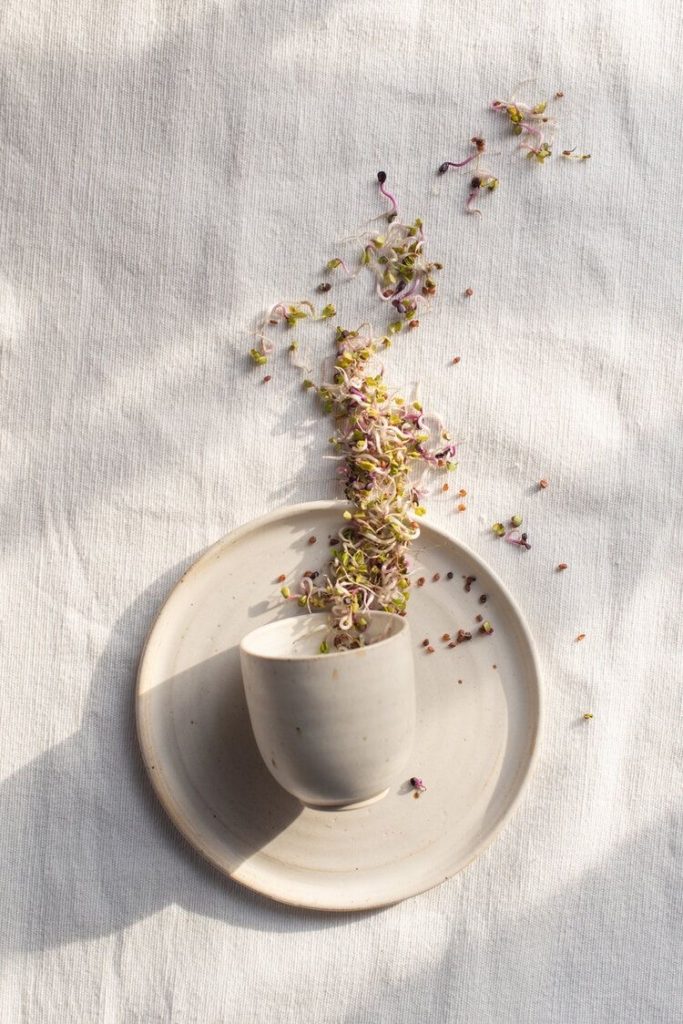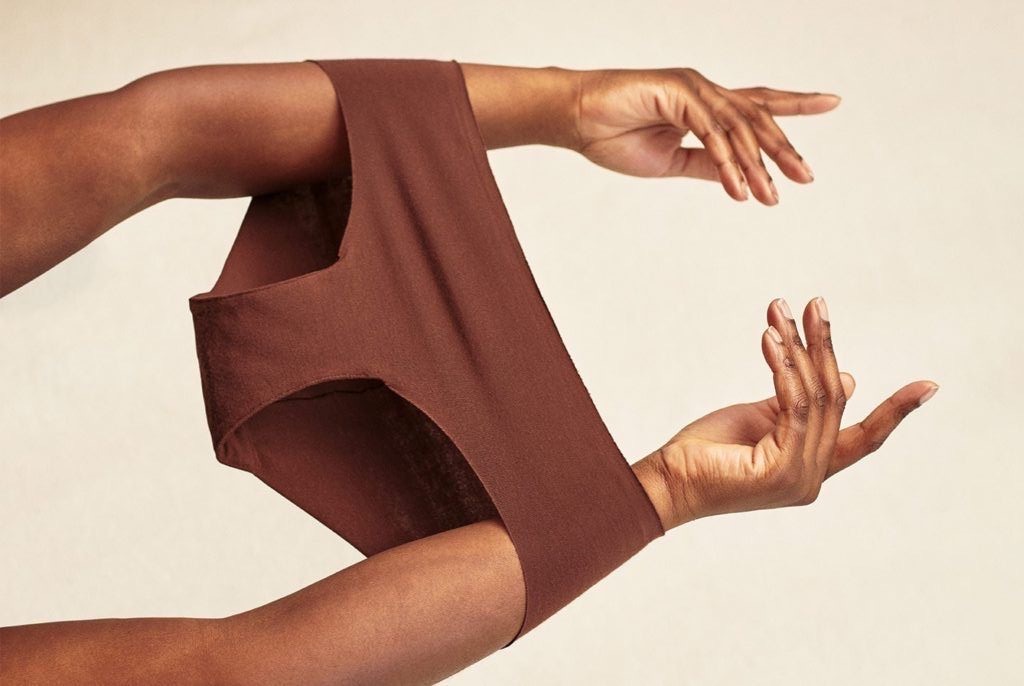Sophia Tremenheere is a CF contributor guiding us on all things hormones with her we’ll be debunking why women’s health shouldn’t be taken for granted and particularly when hormones are present.
Month after month millions of women suffers from premenstrual syndrome. Bloating, breakouts, pain, headaches, cramp, fatigue, and irritability, the list of symptoms attributed to PMS are endless. If you are in the tribe, you’ll be happy to discover that there are many different theories when it comes to mitigating PMS symptoms.
You’ll also like this:
Italian Beauty Brand ‘Espressoh’ Is Here
8 Best Products to Repair Hair From Summer Damage
So we asked Sophia about what’s actually “normal” when it comes to our period, and the options for coping with PMS and natural tricks to treating more severe cramps, mood swings, and even fatigue when everything looks uncertain.
Q&A with Sophia Tremenheere, Menstrual Cycle Mentor
What does a normal period look like?
We should be mindful when using the word ‘normal’. It’s important to remember that every woman is different, so we shouldn’t compare ourselves.
Typically, your period should be a bright cranberry color and there should be no clots. On average, you should expect 2–4 tablespoon of blood loss over 4–7 days. You should also experience minimal PMS symptoms and no pain.
First period
The average age a girl gets their first period is 12–14 years old, however, research shows that some are getting theirs much earlier nowadays. Many may find that their first few periods are light and brown in color due to greater oxygen exposure.
Saying this, there really is no such thing as what the perfect ‘first period’ should look like. Particularly when you consider that each woman’s experience will be different. I believe this is largely impacted by your perception too. I know some women celebrated theirs with their mums and sisters, whilst others hid it from their parents for well over a year. If we, as a society, create a positive experience around it, then this is likely to improve our relationship with our periods, bodies, and even ourselves.
Cycle length
Typically, a menstrual cycle is around 28 days long, which means that there are 28 days between your first period and your next one. However, a healthy cycle is considered anywhere between 26 and 32 days long. If yours is more or less, this is a key indicator that there may be an underlying hormone issue.
PMS symptoms
Women can experience PMS symptoms up to two weeks before their period and can show up in a number of different ways. These include acne, food cravings, bloating, headaches, fatigue, tender breasts, anxiety, and even depression. Again, although many women experience PMS, it should be at a minimum and not have an impact on your everyday life.
Why some women have different cycles?
Our cycles can be impacted by a number of factors; from stress to trauma, inflammation, nutrition, sleep, and toxins. If your cycle is irregular, or even missing, this is a sign that your hormones are out of whack and may suggest that you are suffering from an endocrine disorder, such as polycystic ovarian syndrome. Whereas, if it’s less than 26 days, this could be a sign that you are not producing enough progesterone (the hormone that prepares the body for pregnancy).
Why we have PMS?
It saddens me that 75% of women experience PMS, with many having to reach for medication. PMS symptoms vary from woman to woman and are signs that our hormones have become imbalanced. Instead of hating on our bodies, we should feel gratitude. Our bodies have been beautifully designed to give us signs that our hormones are out of balance. It’s important that we listen to these.

How to mitigate PMS symptoms?
Rather than ‘treating’ our Premenstrual syndrome symptoms as they occur, we need to take a holistic approach throughout our entire menstrual cycle. A technique I use with my clients is ‘Cycle Syncing’, whereby they sync their nutrition, exercise, personal and career activities and self-care practices to the four different phases of their cycle: Inner Winter (Days 26–5), Inner Spring (Days 5–12), Inner Summer (Days 12–19) and Inner Autumn (Days 19-26).
For example, during your Inner Autumn, your energy levels begin to dip and continue to do so as you approach your period. Instead of ‘pushing’ against this phase in order to ‘stay productive’, you should consciously surrender. Opt for activities that are more relaxing, such as reading, getting out in nature, or taking warm baths. Don’t worry, you’ll be able to harness this ‘restored’ energy during your Inner Summer so that you can execute on projects or socialize.
Likewise, nutrition plays an important role in supporting your hormones and PMS symptoms, such as feeling more emotional. Leading up to your period, boost serotonin (a hormone that helps to regulate our moods, sleep, and eating behavior) by eating quinoa, buckwheat, and fermented foods, such as kimchi or sauerkraut and take a good quality magnesium supplement.
If you are experiencing acne, then I recommend that you add ground flaxseed into your meals, such as sprinkling it on top of salads or smoothie bowls. Flaxseed helps to detoxify and eliminate excess oestrogen and is also a great source of omega 3 fat, which promotes healthy hormone production.
What role can plants, herbs, and/or supplements play in regulating PMS symptoms?
Plants and herbs are so powerful to mitigate PMS symptoms, the reason why I promote following mostly a plant-based diet, accompanied by good sources of organic protein. Currently, we eat more meat than necessary, which often contains hormones.
The problem is that, nowadays, it has become difficult to get all the nutrients that you need from plants alone, owing to soil depletion. This means that you may need to take supplements. They can become expensive so I recommend that you work with a healthcare professional to recommend essential ones tailored to your hormone protocol, whilst still addressing the root cause of your hormone imbalances.
Best herbs for period pain and cramping?
My go-to herbs are turmeric and ginger, which contain anti-inflammatory properties. I like to remind my clients that although they can help alleviate period pain and cramping, they should not be used in isolation but alongside self-care practices. For example, you can easily incorporate them into your diet by planning ahead. During your Inner Summer (when your energy level is likely to be at its optimal level), cook a big batch of coconut curry using these herbs. You can then freeze and take out to reheat them during your Inner Autumn and Winter, when you otherwise may not have felt up to cooking.
Another idea is to schedule some personal time. One of my favourite rituals to fight PMS symptoms is soaking in a warm bath filled with clary sage essential oils for period cramps whilst sipping on a golden milk latte (made of non-dairy milk, turmeric, and cinnamon).
Are women more aware of their menstrual cycle nowadays?
I am definitely seeing a greater interest in menstrual cycle awareness, and women awakening to the fact that their periods are not solely a sign of their fertility. Our hormones affect so many aspects of our wellness; from our mental, physical and emotional wellbeing to our creativity, productivity, and even our spirituality. It’s important that we educate and empower ourselves on our periods, hormones, menstrual cycle, and PMS symptoms. We need to take responsibility for our own health and, most importantly, be our own advocates.
What are some of the most persistent myths about periods/period health?
There are so many! Where do I begin?
Myth #1: Hormonal birth control (HBC) helps to regulate your cycle and ‘fix’ hormone imbalances.
HBC acts as a bandaid. It contains synthetic hormones, which prevent ovulation. This means that your monthly ‘period’ is, in fact, a withdrawal bleed (i.e. the shedding of your uterus lining). Moreover, it can even deepen your hormonal imbalances and create new ones, such as gut problems. When coming off HBC, some women may face irregular or missing periods for up to a year while their bodies detoxify of the synthetic hormones.
There is another way. Hormone imbalances can be treated naturally and put into remission.
Myth #2: That period cramps are normal.
Yes, they are common but they are not normal. During our Inner Winter (ie days 26–5), chemical-like hormones called prostaglandins are released, which contract to shed the uterus lining. Cramping is due to excessive levels of prostaglandins and can be treated naturally.
If you are experiencing debilitating cramps, chronic pelvic pain so bad that it’s affecting your everyday life, or with you even ending up in the hospital then this could be a sign that you have endometriosis. Endometriosis is an inflammatory disease, where tissue grows throughout the pelvis on structures, such as ovaries. It can take up to ten years to be diagnosed so perseverance in working with a healthcare professional that you trust and taking a natural approach is vital.
Myth #3: That you can’t get pregnant whilst on your period.
That’s not entirely true. The sperm can survive up to five days in the female reproductive system. So, for example, if you have sex on the last day of your period and you ovulate earlier, you could become pregnant.
How does stress play a role in all this?
Stress has a major impact on our menstrual cycles in general and PMS symptoms in particular and is one of the main root causes of why women may experience period symptoms or irregular or even missing periods. Your body does not know the difference between physical or emotional stress. When your body believes that there is a threat it goes into ‘fight’ or ‘flight’ mode. It releases a surge of cortisol, the stress hormone, and prioritizes bodily functions that are critical for its survival.
This means that functions as reproduction are temporarily halted. If your body is constantly going into ‘fight’ or ‘flight’ mode, then your body will continue to believe that it is not safe to ovulate. This year, I have had countless women tell me that their periods have been late or disappeared completely during this global pandemic. Read about how you can manage your stress levels during COVID-19.
You’ll also like this:
Daily Rituals For Using Crystals To Instil Mindfulness








